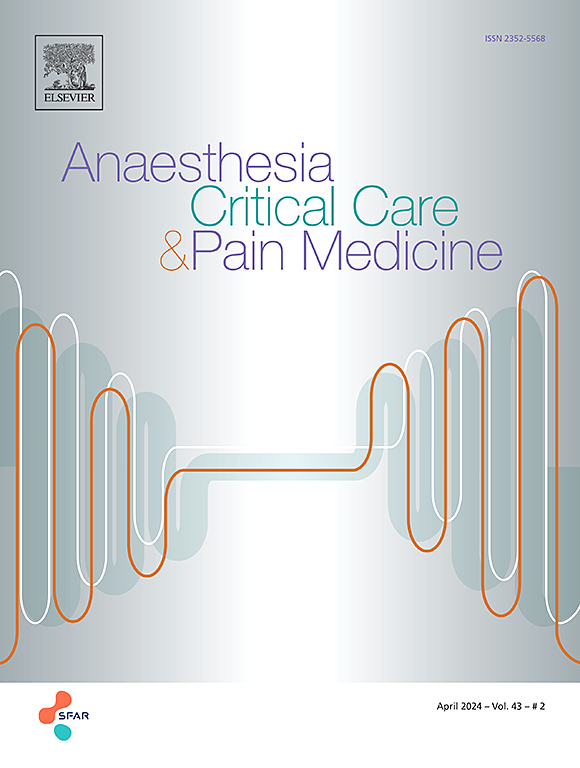Evaluating early mobilisation in critically ill COVID-19 patients: Secondary analysis from the ESICM UNITE-COVID-II multicentre observational study
IF 4.7
3区 医学
Q1 ANESTHESIOLOGY
引用次数: 0
Abstract
Background
Early mobilisation (EM) within the first 72 h of ICU admission is essential for preventing ICU-acquired weakness; however, mobilisation rates remained low among mechanically ventilated (MV) COVID-19 patients during the pandemic waves. This study aimed to characterise the association between EM and 60-day outcomes.
Methods
A multicentre observational study conducted by the European Society of Intensive Care Medicine (ESICM) examined mobilisation strategies during the second COVID-19 wave (UNITE-COVIDed2021). All patients with confirmed SARS-COV-2 infection who were in the ICU on the peak day between 1st January and 1st June 2021 were included. The analysis expanded on the UNITE-COVIDed2020 study, comparing the first and second COVID-19 waves using a combined dataset.
Results
Data from 2053 patients during the second wave across 103 ICUs in 35 countries were analysed and compared with 4190 patients from the first wave. EM was achieved in 801 (39%) vs. 1114 (27%), p < 0.001, respectively. In the combined cohort, MV on admission significantly reduced the likelihood of EM (OR 0.29, 95% CI: 0.25–0.33, p = 0.001). While EM did not improve ICU or hospital length of stay, it was associated with reduced 60-day mortality (OR 0.74, 95% CI: 0.64–0.86, p = 0.001) and transfer rates to other care facilities (OR 0.74, 95% CI: 0.59–0.94, p = 0.001).
Conclusion
EM is feasible and beneficial for critically ill COVID-19 patients. It was associated with reduced mortality and lower transfer rates to other care facilities, which underscores the critical role of EM in enhancing patient recovery during a pandemic.
评估COVID-19危重症患者的早期动员:ESICM UNITE-COVID-II多中心观察性研究的二次分析
背景:在ICU入院前72小时内早期活动(EM)对于预防ICU获得性虚弱至关重要;然而,在大流行期间,机械通气(MV) COVID-19患者的动员率仍然很低。本研究旨在描述EM与60天预后之间的关系。方法:欧洲重症监护医学学会(ESICM)开展了一项多中心观察性研究,研究了第二波COVID-19 (UNITE-COVIDed2021)期间的动员策略。纳入2021年1月1日至6月1日高峰日在ICU的所有确诊SARS-CoV-2感染患者。该分析在UNITE-COVIDed2020研究的基础上进行了扩展,使用综合数据集比较了第一波和第二波COVID-19。结果:分析了35个国家103个icu中第二波2053名患者的数据,并与第一波4190名患者进行了比较。801例(39%)对1114例(27%)实现了EM, p结论:EM对COVID-19危重症患者是可行且有益的。它与降低死亡率和降低转诊到其他护理机构的比率有关,这强调了EM在大流行期间加强患者康复方面的关键作用。
本文章由计算机程序翻译,如有差异,请以英文原文为准。
求助全文
约1分钟内获得全文
求助全文
来源期刊

Anaesthesia Critical Care & Pain Medicine
ANESTHESIOLOGY-
CiteScore
6.70
自引率
5.50%
发文量
150
审稿时长
18 days
期刊介绍:
Anaesthesia, Critical Care & Pain Medicine (formerly Annales Françaises d''Anesthésie et de Réanimation) publishes in English the highest quality original material, both scientific and clinical, on all aspects of anaesthesia, critical care & pain medicine.
 求助内容:
求助内容: 应助结果提醒方式:
应助结果提醒方式:


